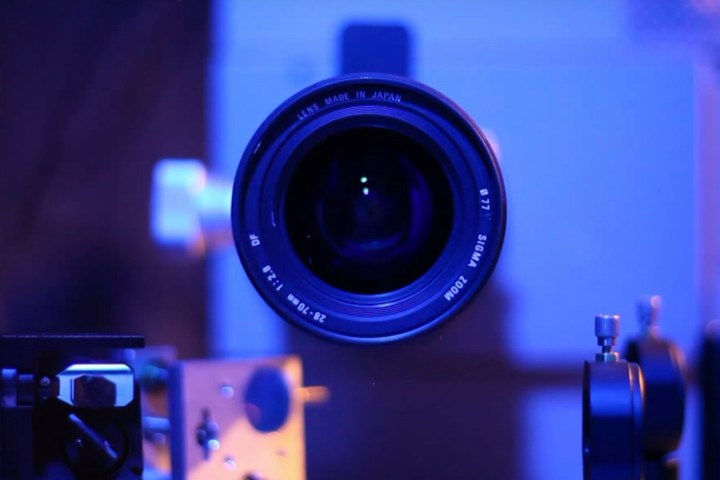
Andreas Velten pioneered the technology at MIT, and now leads a team of researchers at Morgridge and the University of Wisconsin-Madison, where both institutions are working together to optimize it. The DARPA grant will allow them to explore the limitations of the technology and hopefully develop fully-functional hardware that can be used in the field. UW-Madison is one of eight universities to receive 2016 DAPRA grants to investigate different forms and applications of non-line-of-sight imaging.
The camera works by shining a rapid pulse of laser light into a room. When the laser hits a wall or ceiling, the light scatters, bouncing off of other surfaces and objects. Many photons eventually make it back to the camera, arriving at different times depending on how far they’ve traveled. The camera can then use that information to digitally reconstruct an image of the room, including any people that may be inside of it.
Recording the photons that bounce back requires highly specialized equipment, so don’t expect this technology to come to a cameraphone near you. The sensor must be extremely sensitive, especially if the camera is to be able to see around multiple walls, a goal the team is currently working toward.
“The more times you can bounce this light within a scene, the more possible data you can collect,” Velten said. “Since the first light is the strongest, and each proceeding bounce gets weaker and weaker, the sensor has to be sensitive enough to capture even a few photons of light.”
The DARPA grant will fund four years of research, with the first two dedicated to investigating the full potential of the technology. The second two years will be spent developing the hardware, making it viable for production and implementation.
Non-line-of-sight imaging has numerous applications, from search and rescue, to exploring shipwrecks, and potentially even mapping moon caves. It won’t, however, have any effect on standard photography. “We are interested in capturing exactly what a traditional camera doesn’t capture,” Velten said.



